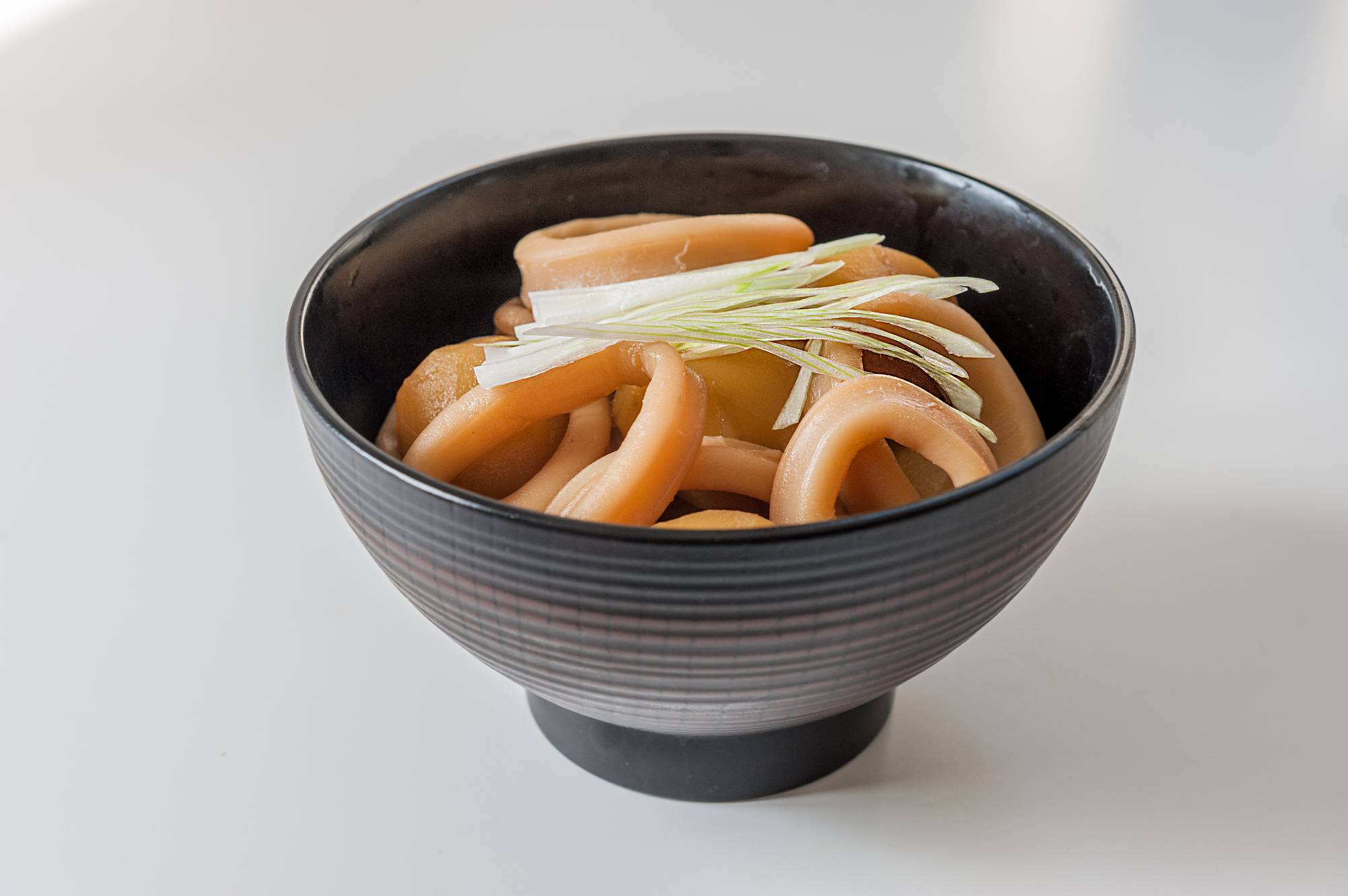You may not think of seafood as having a season, but it certainly does. With some fish, it’s better to buy when they are quite high in fat, since it improves their flavor. Some fish are also considered to be in peak season when they are carrying eggs, which are a delicacy. With seafood like squid, whose fat content is not so important, a great advantage to buying in season (besides the flavor) is that it's usually more affordable. Right now, varieties like the ever-popular aori-ika (bigfin reef squid), as well as the lesser-known kaminari-ika (“lightning squid”), jindō-ika (Japanese dwarf squid) and tiny, delicate hotaru-ika (“firefly squid”) are in season.
This dish stars a whole aori-ika, which is the most familiar type and size of squid used in Japanese cooking. Breaking down a whole squid may seem intimidating, but it's actually a lot easier to do than breaking down a fish, since you don’t need a knife. The only thing you need to be careful of is to not break the ink sac or the kimo (sac that holds the innards). It's not a disaster if they do break, but it can be messy.
Both can be used for some delicious dishes — the kimo is an essential part of ika no shiokara, (salt-preserved squid and intestines), which is a rather addictive chinmi (delicacy). And the ink is used as a dramatically dark, briny sauce for dishes like pasta al nero di seppie, a speciality of Venice.


















With your current subscription plan you can comment on stories. However, before writing your first comment, please create a display name in the Profile section of your subscriber account page.